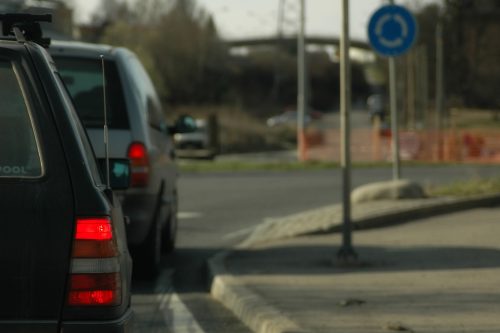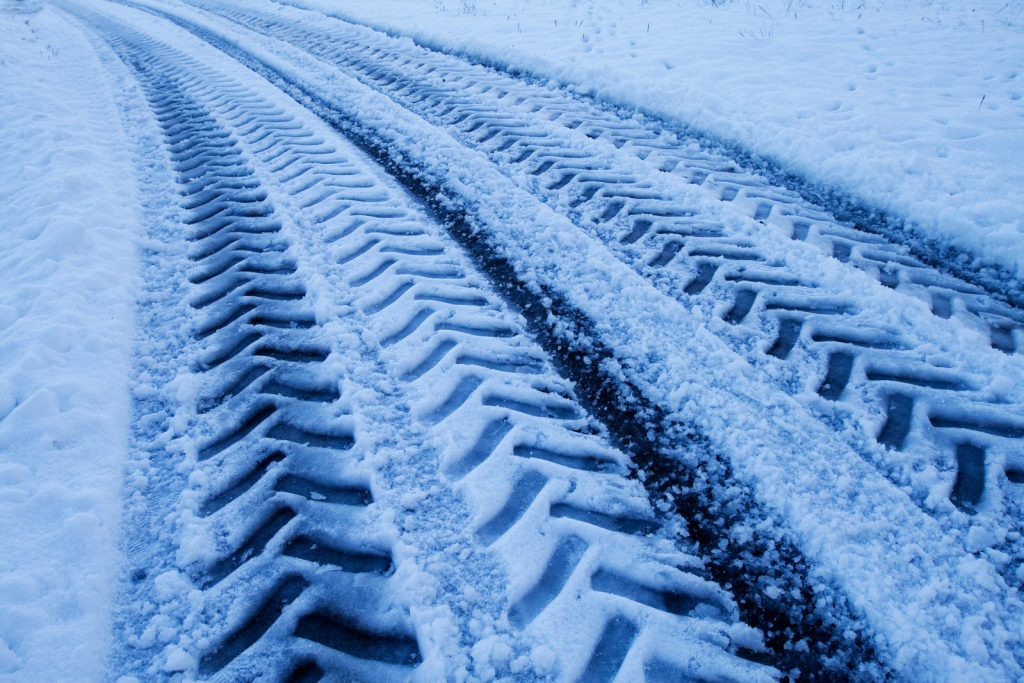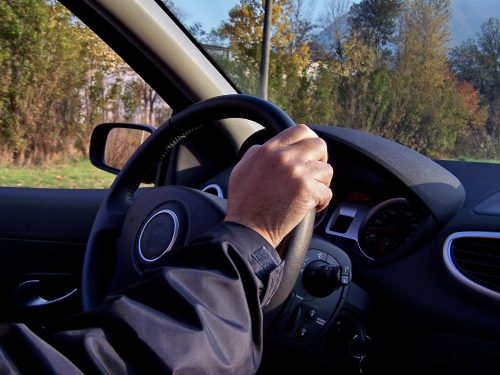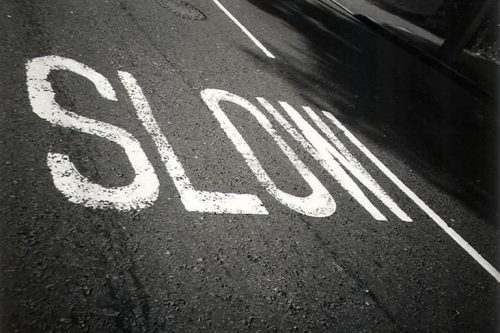How to handle car emergencies
It is important to know what to do to for your own safety and that of the other drivers around you.
Depending on the severity of the emergency, the first few seconds can be critical. Here we have produced a list of likely car emergencies and how to recover from them.
What to do if your car has a blow out?
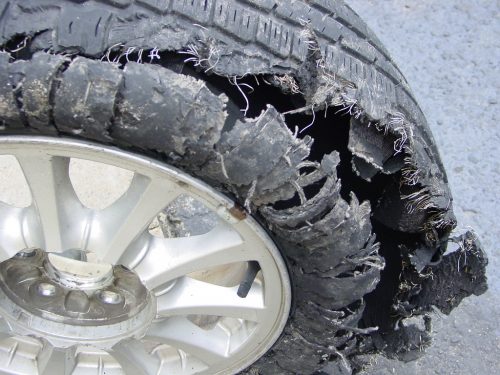 Photo Credit: The Tyre Zoo, Creative Commons 2.0
Photo Credit: The Tyre Zoo, Creative Commons 2.0
Avoid any sharp braking as this is likely to cause the car to spin.
Hold the steering wheel and try to maintain a straight line. If necessary press the accelerator for an instant to help stabilise the direction of the vehicle.
If it is the front tyre, you will feel it through the steering wheel. Avoid braking as this shifts the weight to the front of the car. Avoid taking your foot suddenly off the accelerator. Grip the steering wheel tightly and correct the direction of the vehicle. If necessary press the accelerator for an instant to assist with stabilising the direction of the vehicle. The car will try to veer to the side of the blow out. Try to maintain the steering in a straight line. If you have a rear wheel drive, changing to a lower gear may help, but not at the expense of holding the steering straight.
Try to keep the vehicle in a straight line, do not change lanes or try to get to the side of the road until the vehicle has slowed right down.
Put the hazards on when you have control over the steering (or if you have a passenger to do this for you).
If it is the back tyre, you will feel it through the body of the car or seat. Grip the steering wheel and try to hold a straight line. If the car is weaving or turning to the side avoid braking as this may cause the car to spin. Wait until you have the car in a straight line and brake very gently. If required press the accelerator for an instant to assist with stabilising the direction. I f you have a front wheel drive car changing to a lower gear may help, but only do this if you have very good control on the steering and gear changes must be gentle to avoid spinning.
Try to keep the vehicle in a straight line, do not change lanes or try to get to the side of the road until the vehicle has slowed right down.
Put the hazards on when you have control over the steering (or if you have a passenger to do this for you).
Avoid anything that weakens the tyre walls e.g. driving on tyres that are not fully inflated, scrubbing your tyres on kerbs, parking with your tyres pressed against the kerb. Check your tyres regularly and especially before a long journey. Make a visual check for any signs of bulging or weakness and check the tyre pressure to make sure it is the recommended value.
What to do if you skid on ice?
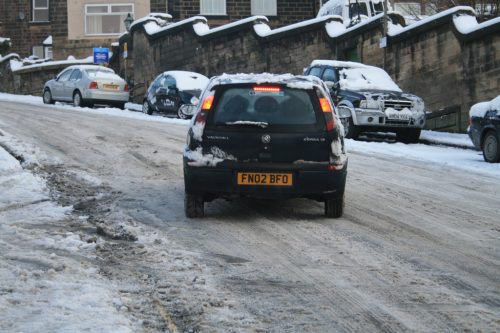 Photo Credit: Chris Barnes, Creative Commons 2.0
Photo Credit: Chris Barnes, Creative Commons 2.0
If you begin to skid on ice this means you are going too fast for the conditions on the road. Driving at a safe speed of 45mph or less along with avoiding sudden braking, acceleration or turns will go a long way to help avoid getting into this situation.
When in a slide remove your foot from the accelerator as this will only make things worse. Depress the clutch and turn the steering wheel into the direction of which you are skidding. As you begin to steer straight DO NOT brake completely as this will lock your wheels, making you skid further.
If you need to brake then do so by pumping the brake up and down as this will settle the car down. If skidding downhill put your gear in third or fourth to prevent further skidding.
Turn into the direction that your vehicle is sliding into. Avoid steering too far though, as this will cause the car to slide in the opposite direction.
What to do if you are aquaplaning?
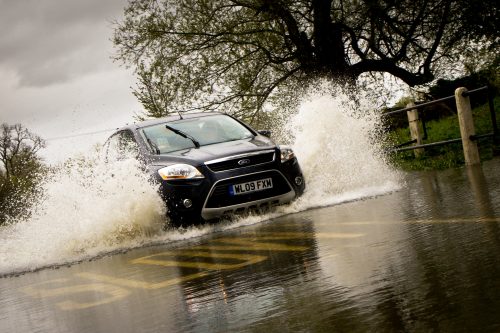 Photo Credit: Matt Preston, Creative Commons 2.0
Photo Credit: Matt Preston, Creative Commons 2.0
Aquaplanning takes place when the vehicle's four wheels lose complete traction on the road by being lifted off the surface by a cushion of water.
When aquaplaning you will have little or no directional control. Avoid the temptation to put on the brakes as this could lead your vehicle into a skid. Abstain from making any sudden turning movements of the steering wheel and let the vehicle find its own path whilst slowly taking your foot off the accelerator until you begin traction through the wheels again.
Once the traction returns begin to ease the steering wheel in the direction you need to go. Now you can brake gently with light pumping actions if you need to. Brake normally if your vehicle has ABS.
Avoid aquaplaning by slowing down on wet roads, ensuring your tyres are properly inflated and do not use cruise control in wet conditions.
What to do if your brakes fail?
Brake failures can be prevented by undertaking consistent brake-systems inspections. However, if you find yourself in a position where they have failed remain calm and focus on the goal of taking your car to a safe place and bring it to a safe stop as soon as possible.
Begin slowing down by easing off the gas pedal and then turn your hazard lights on - this will signal that something is wrong with your vehicle to other drivers.
Take a low gear as this will help you slow down allowing you to carefully manoeuvre into the shoulder. If your brakes fail on a motorway then it is good advice to use a highway ramp. Don't rush and pull up anywhere as it may take time to find a safe place.
When you have successfully stopped call for help and have your vehicle towed to a mechanic.
What to do if you are stuck in snow?
Avoid spinning your tyres as this will only dig your car deeper into the snow which could result in damaged tyres. To get unstuck from the snow begin by putting your vehicle in the lowest gear and then slowly back up, stop, and then gradually move forward.
This rocking back and forth should allow your vehicle to gain traction. If it doesn't, try again by steering the wheel whilst slowly backing up and then move forward slowly.
If the snow is proving too difficult to drive away from then put your vehicle in park with the safety brake on. Get out of the vehicle and attempt to dig out any snow that is blocking the tyres and attempt the previous instructions.
Loss of steering
Often occurring without warning, loss of steering can be caused by problems with the steering mechanism or related components may have broken, fell off or jammed.
Although there is little you can do when it comes to sudden loss of steering there are steps to carry out to ensure that as little or no damage is done to your vehicle.
Apply the brakes and come to a stop as quickly as possible. Whilst braking it is important to signal a warning to other drivers and pedestrians by turning your hazard lights, blowing your horn and using hand signals.
Throttle sticking
If you are approaching a zone where you must slow down and as you reduce the pressure on your accelerator, but the accelerator pedal does not respond and the vehicle continues at the same speed, you are having problems with your throttle sticking.
If you need to slow or stop instantly you must turn your ignition OFF and quickly apply the brakes. If your vehicle has power steering and power brakes, turning the ignition off will make it harder to steer and brake, but with increased physical effort you will be able to slow the vehicle down. Once your vehicle slows down, direct yourself off the road or to a safe place.
What to do if your windscreen wiper fails?
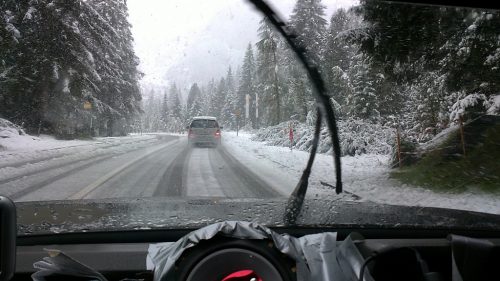 Photo Credit: Andy Schofield, Creative Commons 2.0
Photo Credit: Andy Schofield, Creative Commons 2.0
Windscreen wipe failure can be caused by loose wipers, motor failures, and blades breaking off so it is important to have them checked often.
When suffering a failure whilst driving you will need to safely manoeuvre your vehicle off the roadway and once you come to a safe stop attempt to correct the problem if capable. There may be an object obstructing the wiper.
If you are unable to fix the problem then wait for the bad weather conditions to end and then proceed to the nearest service station.

